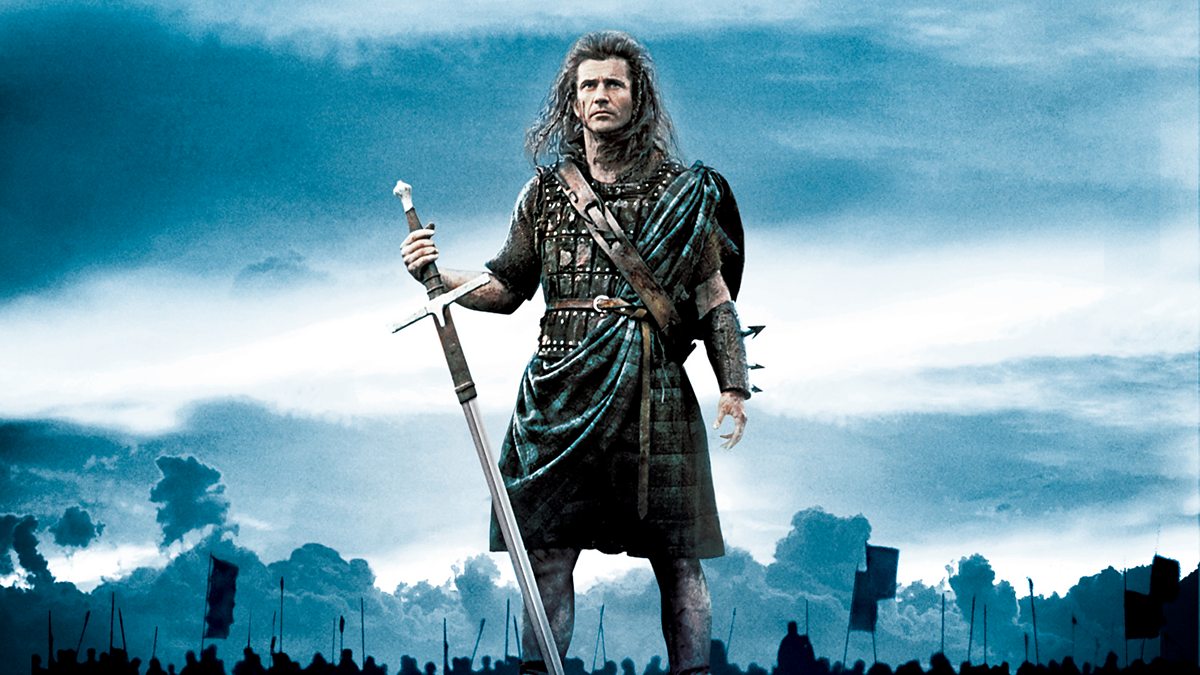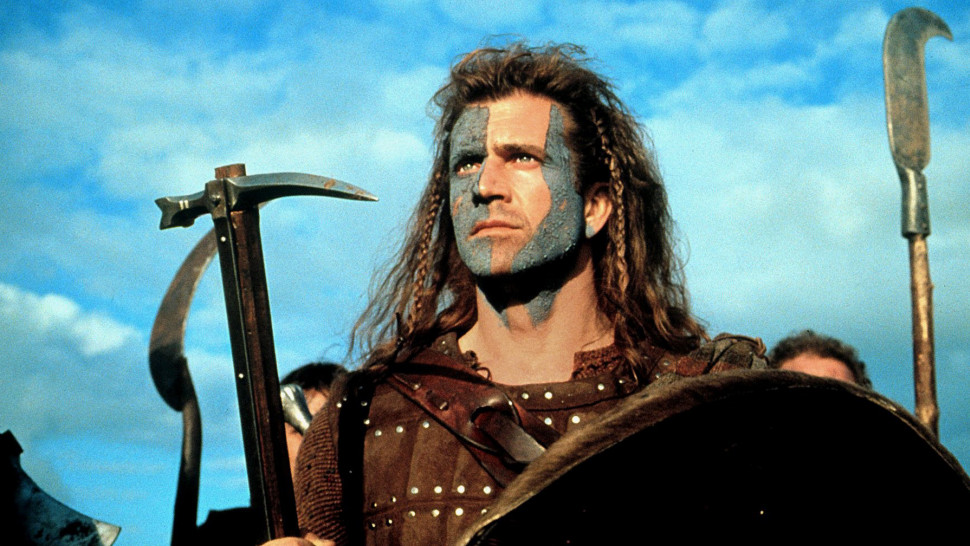Braveheart (1995) - A Cinematic Triumph of Epic Proportions
Introduction:
Braveheart, directed by Mel Gibson, is a cinematic masterpiece that captivates audiences with its epic scale, stirring performances, and timeless themes of freedom, love, and sacrifice. Released in 1995, the film transports viewers to 13th-century Scotland, where they witness the heroic journey of William Wallace, a commoner who leads a rebellion against oppressive English rule. In this review, we'll delve into the various elements that make Braveheart an enduring classic, from its breathtaking battle scenes to its emotional depth and historical significance.
Epic Scale and Cinematic Grandeur:
From its sweeping landscapes to its meticulously crafted battle sequences, Braveheart immerses viewers in the medieval world of Scotland with breathtaking visuals and cinematic grandeur. The film's cinematography, captured by the legendary cinematographer John Toll, beautifully showcases the rugged beauty of the Scottish Highlands, while the meticulously designed sets and costumes transport audiences back in time.
One of the most iconic aspects of Braveheart is its epic battle scenes, which are nothing short of spectacular. The Battle of Stirling Bridge, in particular, is a masterclass in cinematic warfare, with thousands of extras, intricate choreography, and visceral intensity that leave a lasting impression on viewers. Mel Gibson's direction expertly captures the chaos and brutality of medieval combat, drawing viewers into the heart of the action with visceral realism.
Stirring Performances and Emotional Depth:
At the heart of Braveheart are the compelling performances of its cast, led by Mel Gibson in the role of William Wallace. Gibson brings a raw intensity and emotional depth to the character, portraying Wallace as a man driven by his love for his country and his desire for freedom. His performance is both charismatic and vulnerable, capturing the complexities of a reluctant hero thrust into the midst of a brutal conflict.
Supporting performances, including those of Sophie Marceau as Princess Isabella and Patrick McGoohan as King Edward Longshanks, are equally noteworthy, adding layers of emotion and intrigue to the narrative. Marceau brings a sense of grace and dignity to her role as the conflicted princess caught between loyalty and love, while McGoohan imbues King Edward with a chilling blend of cunning and cruelty.
At its core, Braveheart is a story about love, sacrifice, and the fight for freedom, and the film's emotional resonance is undeniable. The bond between William Wallace and his beloved Murron, portrayed with warmth and sincerity by Catherine McCormack, serves as the emotional anchor of the film, grounding the epic tale in personal stakes and human connection. As Wallace's journey unfolds, audiences are taken on an emotional rollercoaster, experiencing triumph, tragedy, and everything in between.
Historical Significance and Cultural Impact:
While Braveheart takes liberties with historical accuracy for the sake of cinematic storytelling, its portrayal of Scotland's struggle for independence against English oppression resonates deeply with audiences. The film's themes of national identity, resistance against tyranny, and the power of the human spirit strike a chord with viewers across cultures and generations, making it a timeless classic that continues to inspire and entertain.
Braveheart's cultural impact cannot be overstated, as it sparked renewed interest in Scottish history and culture, revitalizing tourism to the country and fueling a resurgence of national pride. The film's iconic imagery, including the image of William Wallace adorned in blue face paint and wielding a claymore, has become synonymous with the spirit of Scottish independence and defiance.
Braveheart stands as a cinematic triumph of epic proportions, captivating audiences with its breathtaking visuals, stirring performances, and timeless themes. Mel Gibson's masterful direction, coupled with a stellar cast and a gripping narrative, transports viewers to the medieval world of Scotland, where they witness the heroic journey of William Wallace unfold against the backdrop of war and rebellion.
Despite its historical inaccuracies, Braveheart remains a powerful and enduring classic that continues to resonate with audiences around the world. Its epic scale, emotional depth, and cultural significance ensure its place in cinematic history, making it a must-watch for anyone who appreciates the art of filmmaking and the power of storytelling. Braveheart is not just a movie; it's an experience that leaves a lasting impression on all who dare to brave its epic tale.
Cultural Icon and Symbol of Scottish Identity:
In Scotland, Braveheart has inspired a renewed interest in the country's history and heritage. The film's popularity has led to increased tourism to locations featured in the movie, such as Stirling Castle and the Wallace Monument. Visitors flock to these sites to immerse themselves in the world of Braveheart and to pay homage to the real-life figures who inspired the film.
Historical Discourse and Debate:
Despite its widespread acclaim, Braveheart has been the subject of historical scrutiny and criticism. Historians have pointed out numerous inaccuracies and liberties taken with the facts, from the portrayal of William Wallace's attire to the timing and sequence of key events. While the film undoubtedly takes artistic license for the sake of storytelling, its portrayal of Scottish history has sparked debate and discussion about the relationship between fact and fiction in historical cinema.
However, Braveheart's historical inaccuracies have not detracted from its cultural impact or its ability to inspire audiences. For many viewers, the film's emotional resonance and thematic depth transcend its historical shortcomings, allowing them to connect with the story on a personal and emotional level.
Legacy in Film and Popular Culture: Braveheart's influence on the film industry is undeniable. The success of the film paved the way for a resurgence of epic historical dramas in the 1990s and early 2000s, inspiring filmmakers to tackle ambitious projects with sweeping narratives and large-scale production values. Films such as Gladiator, Troy, and The Lord of the Rings trilogy owe a debt to Braveheart for popularizing the genre and pushing the boundaries of visual storytelling.
Braveheart's influence on the film industry is undeniable. The success of the film paved the way for a resurgence of epic historical dramas in the 1990s and early 2000s, inspiring filmmakers to tackle ambitious projects with sweeping narratives and large-scale production values. Films such as Gladiator, Troy, and The Lord of the Rings trilogy owe a debt to Braveheart for popularizing the genre and pushing the boundaries of visual storytelling.
Moreover, Braveheart's impact on popular culture extends beyond the realm of cinema. The film's memorable quotes, including "They may take our lives, but they'll never take our freedom!" have become ingrained in the cultural lexicon, quoted and referenced in various contexts. Its stirring musical score, composed by James Horner, remains a beloved and iconic soundtrack that evokes the epic scope and emotional intensity of the film.In conclusion, Braveheart's enduring legacy is a testament to its status as a cinematic classic. Despite its flaws and historical inaccuracies, the film continues to captivate audiences with its epic tale of heroism, sacrifice, and the fight for freedom. Its cultural impact, historical significance, and influence on the film industry ensure that Braveheart will be remembered and celebrated for generations to come. As William Wallace famously declares, "Every man dies, but not every man truly lives." Braveheart is a film that continues to live on in the hearts and minds of all who have been touched by its timeless story.






















































